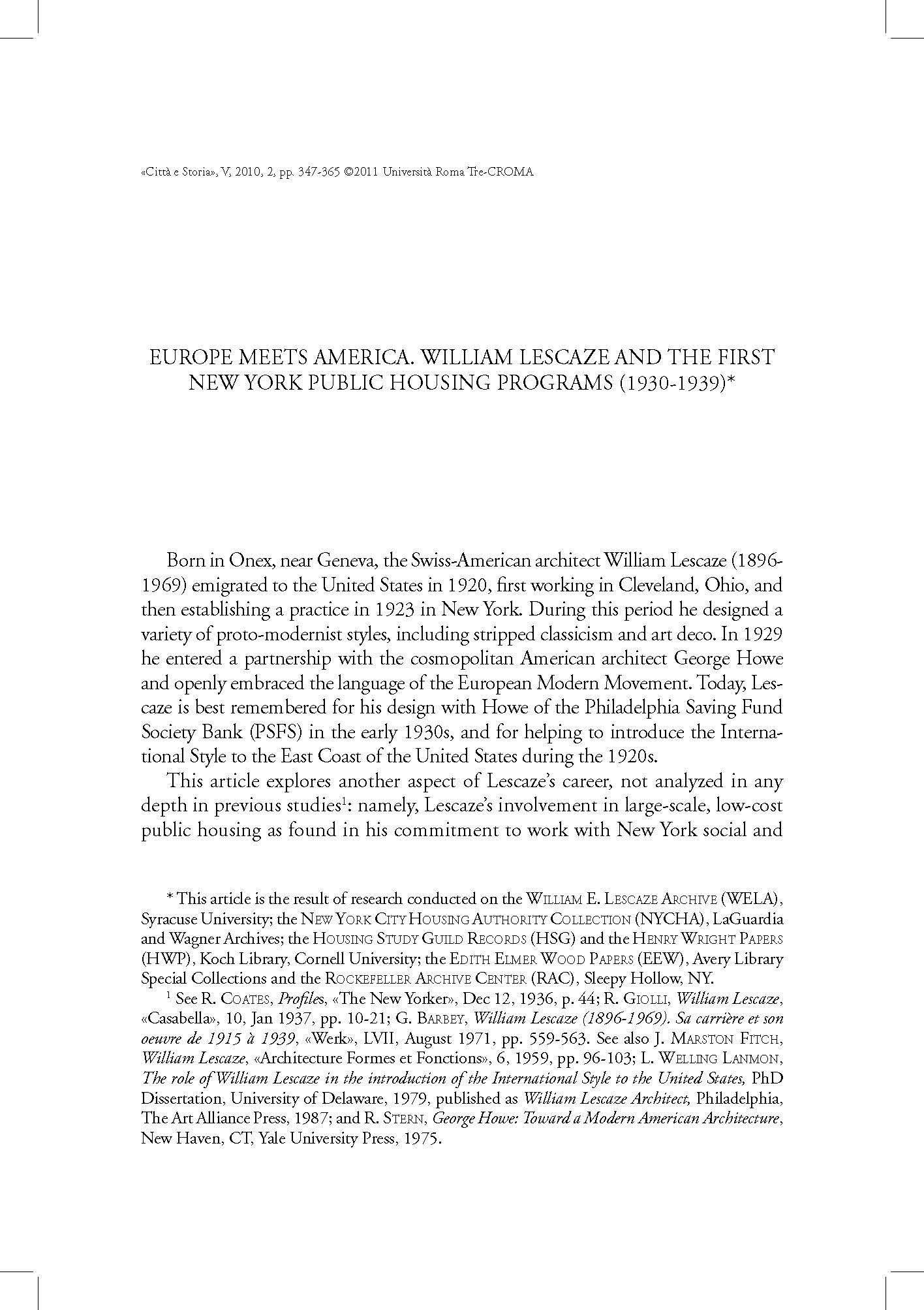Europe meets America. William Lescaze and the First New York Public Housing Programs (1930-1939)
6,00 €
Through the exploration of William Lescaze’s activity in New York during the New Deal, the article examines the influence of architectural forms, schemes and ideals originally conceived for European collective housing during the 1920s, on the shaping of new governmental regulation, as well as the significance of the Swiss-American architect’s involvement within federal housing agencies such as the Housing Study Guild (HSG), the New York City Housing Authority (NYCHA) and the Federal Housing Authority (FHA), acknowledged with his appointment as chief-designer of the first federal limited-income housing project built in New York in 1935. The role he played in the shaping of the first Roosevelt’s public housing programs is emblematic of the progressive acceptance of an internationally accepted set of norms at local level and open to a series of fundamental concerns such as the often contentious encounters between architects, social reformers, housing officials, technicians, and federal agencies in the interwar period.
Through the exploration of William Lescaze’s activity in New York during the New Deal, the article examines the influence of architectural forms, schemes and ideals originally conceived for European collective housing during the 1920s, on the shaping of new governmental regulation, as well as the significance of the Swiss-American architect’s involvement within federal housing agencies such as the Housing Study Guild (HSG), the New York City Housing Authority (NYCHA) and the Federal Housing Authority (FHA), acknowledged with his appointment as chief-designer of the first federal limited-income housing project built in New York in 1935. The role he played in the shaping of the first Roosevelt’s public housing programs is emblematic of the progressive acceptance of an internationally accepted set of norms at local level and open to a series of fundamental concerns such as the often contentious encounters between architects, social reformers, housing officials, technicians, and federal agencies in the interwar period.

